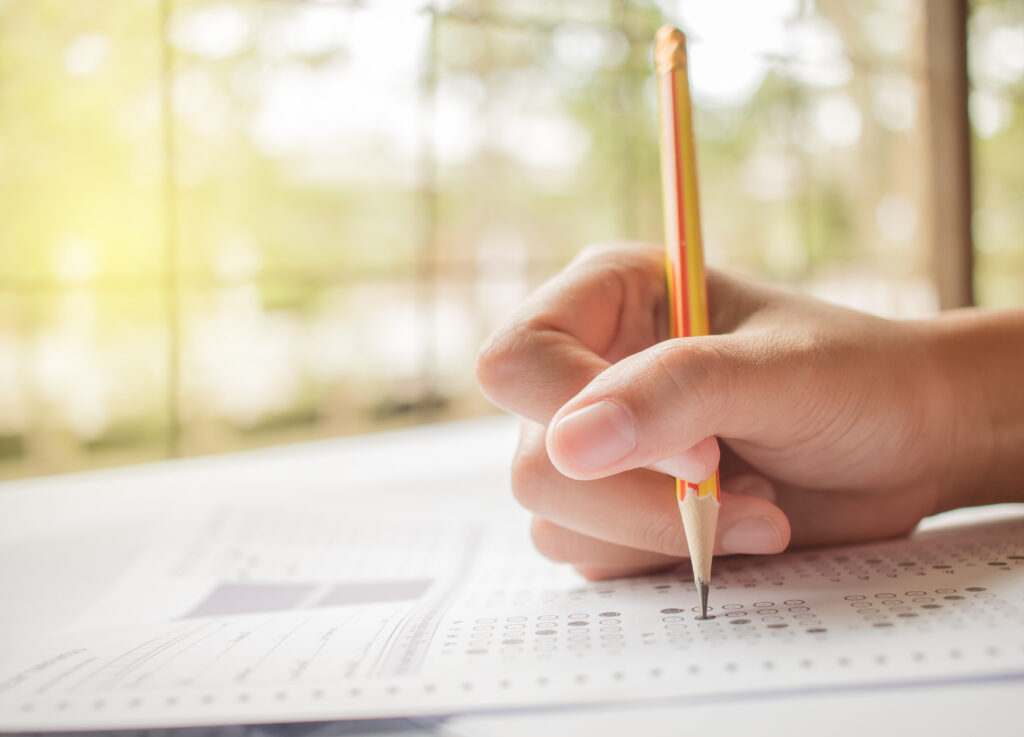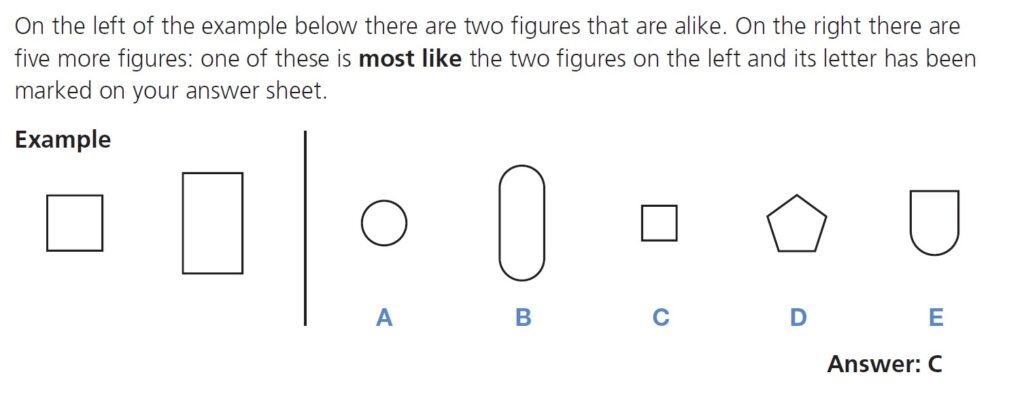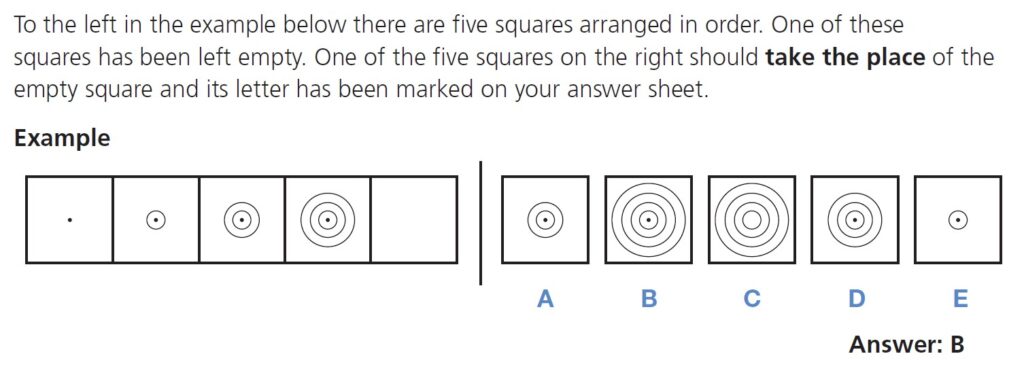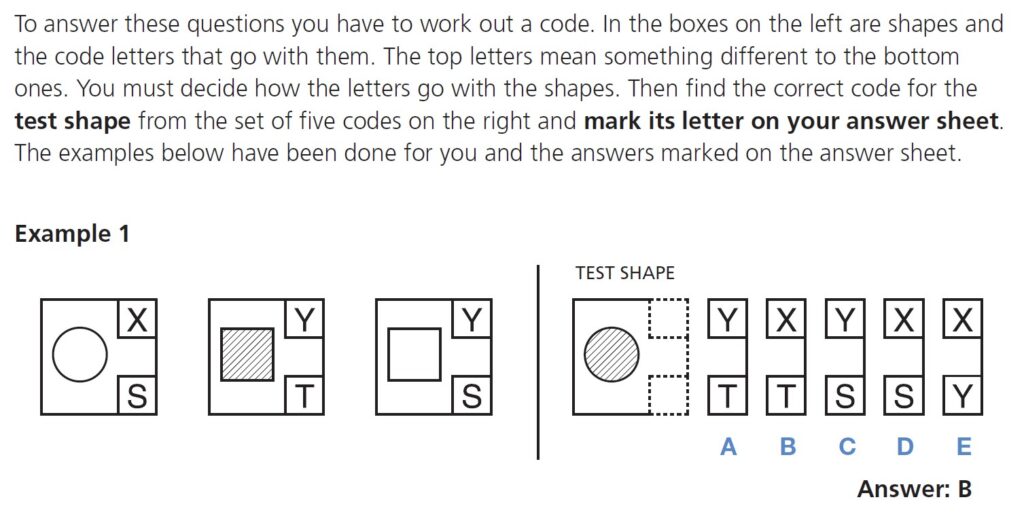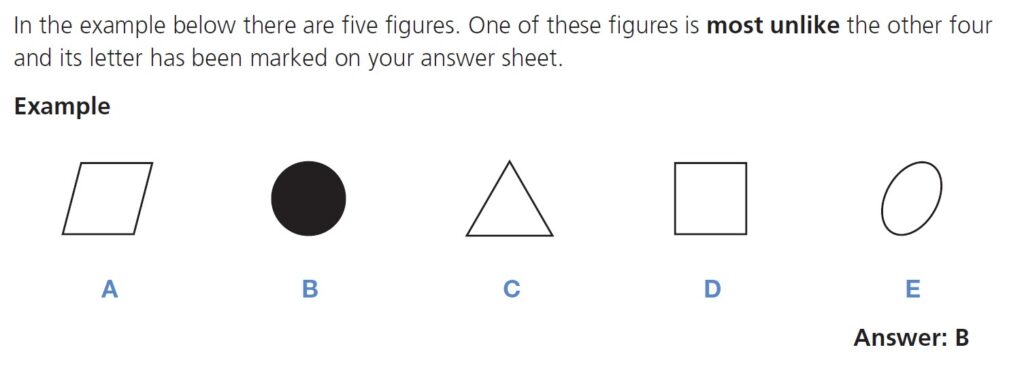Learn more about the Non-verbal Reasoning section of the GL 11 Plus exam: why it matters, sample questions, and top tips for acing it.
In order to succeed in the GL 11 Plus exam, students must be prepared to tackle four different sections: English, Mathematics, Verbal Reasoning, and Non-verbal Reasoning.
While English and Mathematics are typically taught in primary schools as part of the Key Stage 2 National Curriculum, Verbal Reasoning and Non-verbal Reasoning are not usually covered.
It is important to note that even though some aspects of these subjects may be encountered during the learning of other disciplines such as Mathematics, Science, English, Art, Design Technology, and Computing, Verbal and Non-verbal Reasoning are not explicitly taught in the early academic years.
This lack of exposure can make these sections of the 11 Plus exam particularly challenging for most students.
In this article, we will delve into Non-verbal Reasoning, including what it is, what to expect during the 11 Plus exam, and how to prepare for it.
With the right approach and plenty of practice, students can feel confident and ready to tackle the Non-verbal Reasoning section of the GL 11 Plus exam.
This article will revolve around the 11 Plus exam, specifically the version administered by GL Assessment. This particular test has been chosen by West Midlands Grammar Schools for admissions starting in 2024 and beyond, as a result of a recent collaboration.
Read more: GL 11 Plus: Single Entrance Exam for West Midlands Grammar Schools
What is Non-verbal Reasoning?
The Non-verbal Reasoning portion of the GL 11 Plus examination is designed to measure a child’s ability to solve problems through visual information.
It is an essential tool for evaluating a child’s problem-solving abilities and logical thinking skills, which are vital for success in STEM fields.
This section assesses a student’s aptitude for:
- Logical thinking
- Pattern recognition
- Rule discovery
- Problem-solving skills
Additionally, this test can identify students who possess strengths in STEM subjects, including Science, Technology, Engineering, and Mathematics.
What to Expect on the Non-verbal Reasoning Test
The Non-verbal Reasoning section of the GL exam comprises 80 multiple-choice questions, which are divided equally among four sections, with each containing 20 questions.
To complete the test, students must answer each section within a designated time frame.
It is important to note that once the allotted time for a section expires, the student must pause and move on to the next section.
The questions employ shapes and figures to evaluate children’s abilities related to logic, pattern-recognition, and mathematics, among others.
For instance, students may be required to find missing shapes in a series, work out a code which has letters or symbols representing features of shapes, or recognise the reflections or rotations of certain shapes.
Types of Non-verbal Reasoning Questions
The Non-verbal Reasoning section of the GL 11 Plus examination evaluates a child’s grasp of mathematics, logical thinking, and pattern recognition, among other skills related to mathematics.
Here are a few examples of the Non-verbal Reasoning questions that may be included on the test, all of which were obtained from GL Assessments.
It is worth noting that these are just a few examples, and the actual exam will include a variety of different types of questions.
Matching groups
These types of questions require students to pick out a shape from multiple options which share common properties with two (or more) given shapes.
On the left-hand side, the two shapes share the characteristic of having four sides. While their side dimensions differ, their similarity lies in possessing four sides. Only the third shape on the right side share this property, therefore, the answer is C.
Find the missing shape
In this series of questions, students will have to figure out what the missing shape will be in a series.
As you progress through the series, the dot gains an extra ring around it, making the circle bigger each time. But the dot at the centre always stays the same and is present in every cell of the series. Thus, the answer is B.
Finding the code
These questions ask students to find the correlation between letters and shapes.
While both squares have a Y at the top, the circle has an X instead, indicating that the top code represents shape. Similarly, the white shapes at the bottom of the image have an S, but the shaded shape has a T, implying that the bottom code is associated with shading. Now, considering the test shape, which is a shaded circle, its code letters must be X for circle and T for shading. The answer is, therefore, B.
Find the odd one out
From among a group of shapes, students must recognise the shape that is unlike all the other shapes.
All the figures in this example are white except for that one black circle. So, the correct answer is B because it is the only figure that is different from the others.
How to Prepare for 11 Plus Non-verbal Reasoning
There is a common misconception that one need not prepare for the Non-verbal Reasoning section of the 11 Plus since it relies solely on logic and patterns and do not require prior knowledge.
However, this assumption is false.
Adequate preparation can significantly enhance a student’s chances of success in the Non-verbal Reasoning portion of the test.
Non-verbal Reasoning questions can be quite perplexing for children who are unfamiliar with them.
By becoming acquainted with the various question types and practising basic problem-solving techniques, your child can boost their capacity to navigate these challenges effectively.
Here are a few preparation strategies that can help improve your child’s ability to understand and tackle the Non-verbal Reasoning questions during their 11 Plus examination:
Becoming familiar with the process
There is a system your child can adopt to make solving Non-verbal Reasoning problems easier. The steps of this process are illustrated below:
- Understand the question type
- Examine the shapes included in the question
- Locate the similarities and differences
- Figure out the patterns and rules
- Find the shapes and figures that follow the rules
Learning to draw shapes
Encouraging children to draw can be an effective way to simplify complex concepts.
When we attempt to imagine multiple shapes in our minds, the images may become disordered and lead to confusion.
However, by illustrating these shapes, children can better visualise and understand the solution.
Therefore, it’s beneficial to encourage your child to draw shapes when faced with such problems.
Not only can this help them solve the task at hand, but it can also improve their overall ability to visualise abstract ideas.
Solving mock tests
When it comes to preparing for the 11 Plus, practising mock tests is among the most efficient methods, especially for the Non-verbal Reasoning section of the exam.
Practice tests can assist children in honing their abilities to answer Non-verbal Reasoning questions accurately and quickly.
Additionally, mock tests can help familiarise children with the different types of questions that may appear on the exam, providing them with the confidence and skills required to achieve high scores.
Starting preparations early
To prepare effectively for the 11 Plus exam, it is essential to invest time, patience, and continuous practice in all the recommended tips.
Hence, it is advisable for prospective grammar school candidates to commence their preparation well in advance.
Non-verbal Reasoning is not part of the formal school curriculum; hence, it is vital to start familiarising oneself with the subject matter and question types early enough to allow sufficient time for revision before the exam date.
How Tuition Tree Can Help
Preparing for the 11 Plus exam can be an intimidating prospect for both students and their families. However, success requires hard work, dedication, and a commitment to learning.
With the right guidance and support, students can excel in the exam and secure admission to their preferred grammar school.
Tuition Tree provides specialised tutoring services that focus on preparing children for the GL 11 Plus exam, boasting a remarkable 84% success rate in getting students admitted into grammar schools.
We provide personalised study sessions that include both individual and group options, ensuring that each child receives the attention they need to achieve their full potential.
If you are interested in our services or have any queries, please feel free to reach out to us via phone at 0121 270 2889 or fill out our call-back form.
You can also email us at info@tuitiontree.co.uk. Our team is always eager to assist and address any concerns you may have.
Keep reading:

